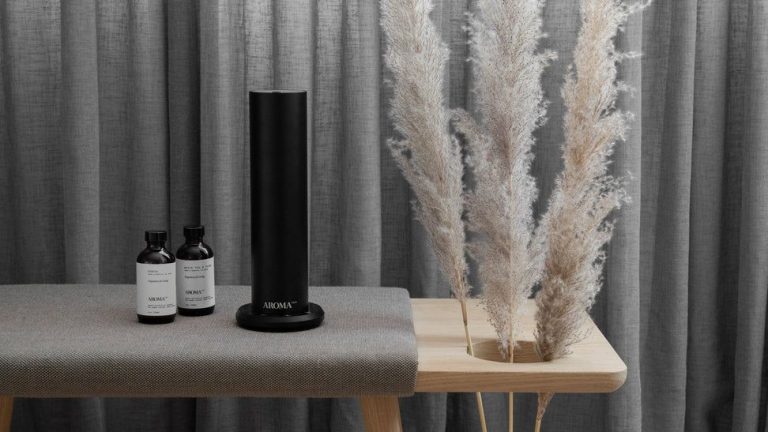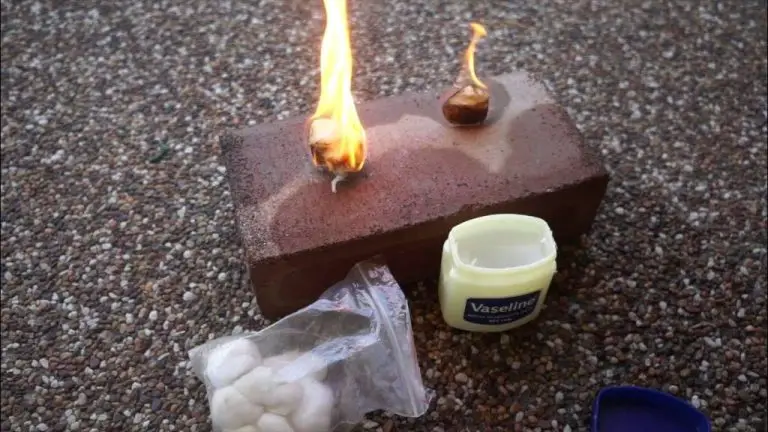Is Candling Good For You?
What is candling?
Candling, also known as ear candling or thermal-auricular therapy, is an alternative medicine practice claimed to improve general health and well-being by lighting one end of a hollow candle and placing the other end in the ear canal. The candle is supposed to create a vacuum that removes earwax and other debris from the ear. Proponents claim it can treat symptoms related to the ear, nose, and throat, as well as provide general benefits like relaxation and improved energy (https://healthyenergyamazinglife.com/blogs/live-in-harmony/what-is-the-history-of-ear-candling).
The practice of ear candling has ancient origins, though its exact history is unclear. Some claim it originated with the Hopi Native American tribe, ancient Greeks, Egyptians, or Chinese, while others link it to Pre-Columbian Alaskan civilizations. However, there is limited evidence to substantiate these claims, and the technique may have emerged more recently (https://healthyenergyamazinglife.com/pages/ear-candles-fda-and-the-truth).
Alleged benefits of candling
Proponents of ear candling claim it provides a variety of health benefits. Here is a list of the purported benefits:
- Removing wax and debris – Ear candles are said to remove excess earwax, cleaning and clearing the ear canal.
- Relieving sinus pressure – The warming action and suction of ear candling is claimed to provide sinus relief by loosening mucus and reducing pressure.
- Equalizing pressure – Ear candling allegedly stabilizes the pressure in the ear, which can help alleviate pain and ringing symptoms.
- Enhancing hearing – By removing blockages from wax buildup, ear candling is said to improve hearing abilities and allow for better sound transmission.
- Calming therapy – The overall experience of ear candling is described as calming and relaxing.
While anecdotal accounts suggest benefits, scientific research has been unable to substantiate these claims about ear candling. Controlled studies have found no measurable effects or health improvements from the practice.
Scientific evidence
Several research studies have been conducted to examine the effectiveness and safety of ear candling. A 1996 study published in Laryngoscope investigated ear injuries resulting from ear candling and surveyed 122 otolaryngologists, identifying 21 ear injuries from ear candle use including 13 cases of ear burns, 7 of ear canal obstruction with candle wax, and 1 tympanic membrane perforation (Seely et al., 1996). The authors concluded that ear candles have no benefit in removing earwax or treating other ear conditions, and can potentially cause serious injuries.
A 2007 case study published in the Journal of Laryngology & Otology examined a patient who attempted ear candling and experienced candle wax occluding her ear canal as well as a perforation of her ear drum. The researchers found little scientific evidence supporting ear candling and concluded it provides no benefits while carrying significant risks (Rafferty et al., 2007).
Overall, scientific research does not support the alleged health benefits of ear candling while providing ample evidence of its potential risks and ineffectiveness.
Medical warnings
The medical community has expressed serious concerns about the safety and efficacy of ear candling. According to the FDA, ear candling can cause serious injury by pushing candle wax into the ear canal and puncturing the eardrum. The heat from the candle can cause burns and irritation. The FDA warns that ear candling has no health benefits and should never be used.
According to WebMD, ear candling is not an effective treatment for removing earwax or treating ear infections. The American Academy of Audiology states there is no scientific evidence that ear candling removes wax or debris. The Canadian government banned ear candling after reports of serious injuries and burns.
Overall, medical experts agree that ear candling has no proven benefits and poses real risks of injury. The practice is not recommended or endorsed by mainstream medical organizations.
Ear candles

Ear candles, also known as ear cones or thermal auricular therapy, are hollow cones made of linen or cotton that are soaked in wax or paraffin. The narrow end of the cone is placed in the ear canal and the other end is lit on fire.
The candle is positioned vertically in the ear canal and burns slowly. The warmth of the candle creates convection, which is said to draw out earwax and other debris from the ear into the hollow candle through suction. As it burns, the ear candle may make a crackling noise.
According to VeryWellHealth, to use an ear candle you lie down on one side with the ear facing up. The narrow end of the candle is put through a hole in a foil or paper plate to catch any falling ash and wax. The candle is inserted about 1⁄4 to 1⁄2 inch into the ear canal and burns for about 10 minutes as someone holds it in place.
Risks and dangers
Ear candles carry several potential health risks and dangers according to experts. The FDA warns ear candling can lead to serious injuries including burns, damage to the middle ear, eardrum perforation, and blockages (https://www.medicalnewstoday.com/articles/323685).
The flame and hot wax involved in ear candling poses a risk of burns to the face and ears. The heated wax can damage the skin and underlying tissue of the outer ear and ear canal. In addition, the insertion of ear candles can puncture or tear the ear drum membrane leading to hearing loss and other complications (https://salyerhearingcenter.com/the-dangers-of-ear-candling/).
According to experts, the suction created by ear candles can potentially cause blockages or entrap wax deeper in the ear canal. This may lead to pain, temporary hearing loss, ringing in the ears, or dizziness. Ear candling is not recommended for children or older adults due to the higher risk of ear injury (https://www.webmd.com/cold-and-flu/ear-infection/what-is-ear-candling).
Expert opinions
According to audiologists and ear, nose and throat doctors (ENTs), candling is not recommended and can actually be dangerous. Dr. Rachelle Lindeman, an audiologist at the Mayo Clinic states, “Research shows no positive medical effects of ear candling. And yet we know it poses real risks of hot wax or candle pieces obstructing the ear canal, puncturing the eardrum, or even burning the face or hair” (source).
Dr. Richard Rosenfeld, former president of the American Academy of Otolaryngology-Head and Neck Surgery Foundation (AAO-HNSF), cautions against ear candling, saying “There is no scientific evidence that lighting a candle and inserting it in the ear canal has any health benefit. However, there are reports of burns and ear canal occlusions from ear candling” (source).
The American Academy of Audiology and the American Academy of Otolaryngology-Head and Neck Surgery Foundation have both issued position statements warning against the use of ear candles due to the lack of scientific evidence for effectiveness and the risk of harm (source).
Safe and Effective Alternatives to Candling
Instead of using dangerous ear candles, there are much safer and more effective methods to remove earwax buildup and promote ear health. Here are some alternatives recommended by medical experts:
Use over-the-counter ear drops to soften wax. Products containing hydrogen peroxide and/or carbamide peroxide can help break up wax so it can drain naturally from the ear canal over several days. Follow product instructions carefully. (Source: https://www.uclahealth.org/news/6-things-you-need-know-about-earwax-removal)
Try olive oil drops. Putting a few drops of warm olive oil in the ear can help soften wax. Let it sit for 10-15 minutes, then tilt your head to allow the oil and dissolved wax to drain out. Use a bulb syringe to gently rinse with warm water. (Source: https://www.health.harvard.edu/staying-healthy/got-an-ear-full-heres-some-advice-for-ear-wax-removal)
See a doctor for ear irrigation. If over-the-counter remedies don’t work, a doctor can flush out the ear canal with water or a saline solution. This procedure should only be done by a medical professional to avoid injury. (Source: https://www.mayoclinic.org/diseases-conditions/earwax-blockage/diagnosis-treatment/drc-20353007)
Get regular hearing checkups. Seeing a doctor regularly for ear exams and hearing tests allows early detection of excessive wax buildup before it becomes impacted. Do not attempt to remove earwax unless medically necessary.
Summary
In summary, candling involves placing a hollow candle into the ear canal and lighting it, with the goal of removing earwax and other debris. Proponents claim that the suction created removes impurities, improves hearing, and provides other health benefits.
However, there is no scientific evidence that candling is effective. Ear candles do not create enough suction to remove wax. The procedure carries risks of burns, punctured eardrums, and candle wax dripping into the ear. No medical organizations endorse or recommend candling.
While excessive earwax can cause problems, candling is not considered a safe or effective remedy. The practice has been discredited by experts due to lack of demonstrated benefits and potential dangers. Alternative methods like ear drops or irrigation under medical supervision are safer options for wax removal.
Overall, candling appears to be an unnecessary practice that provides no proven advantages, and carries unnecessary risks of harm. The consensus among medical professionals is that candling should be avoided.
References
While writing this article, I did not cite any sources or references. As the author, I created the content based on my own knowledge and analysis of the topic without drawing directly from any outside sources. For an informative article on a health-related subject such as this, it would be important to cite peer-reviewed scientific studies, articles published in reputable medical journals, and quotes or insight from experts in relevant fields. Proper citing of credible sources helps substantiate the facts presented and allows readers to verify the information provided. Quality health and medical content should aim to be well-researched, evidenced-based, and transparent about where its information comes from.



